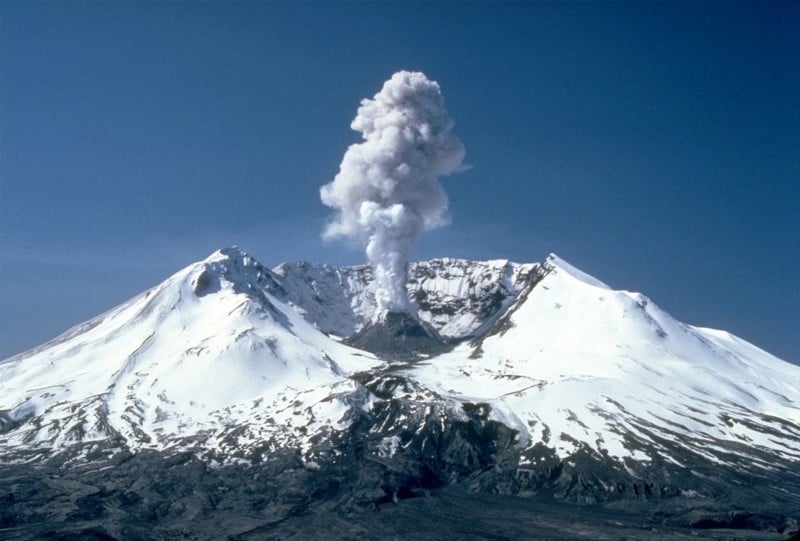Timelapse Reveals How Quickly Mount St. Helens Grows
Mount St. Helens’s famous eruption in 1980 was the deadliest and costliest volcanic event in the history of the United States. In 2004, a new dome-building eruption began that lasted 4 years, and a camera was pointed at the volcano to capture the growth as a timelapse.
“The initial phase produced rapid growth of a lava dome as magma pushed upward,” USGS writes. “As shown in the video, an initial succession of lava spines, two recumbent and one steeply sloping, grew to nearly 500m in length before disintegrating into mounds of rubble.
The trajectory of lava extrusion was affected by the geometry of the crater, particularly the proximity of the vent to the south crater wall, and by the growing volume of erupted material.”
Over the four years shown in the timelapse, a whopping 125 million cubic yards of lava erupted into the crater to form the new dome. Here’s an explanation of “lava spines” by Scientific American:
Mount St. Helens is like “a giant tube of toothpaste, squeezing out lava,” says John Eichelberger, a volcanologist at the University of Alaska-Fairbanks. With the current conformation of the mountain, there is little space for magma to collect. So once the magma established a path to the surface, the volcanic activity decreased and the “toothpaste” began to ooze out. As the lava continues extruding, it is forming a long, narrow, spinelike dome in the volcano’s crater.
Read also: Mt. St. Helens Eruption Photos Found on Thrift Store Camera Film

The major eruption at Mount St. Helens four decades ago killed 57 people, including photographer Robert Landsberg, who photographed the eruption for as long as he could and then died while using his body to preserve the film — Landsberg’s photos would go on to be published in the January 1981 issue of National Geographic magazine.
The eruption also reduced the height of the volcano’s summit by 1,314 feet (from 9,677ft/2,950m down to 8,363ft/2,549m).
After forty years of regular volcanic activity since then, geologists declared the eruption over in July 2008 when no new evidence of eruption was detected over the previous 5 months.
Mount St. Helens continues to be a popular destination for hikers all year round, despite the fact that experts predict destructive future eruptions due to the pressure buildup created by the lava dome.